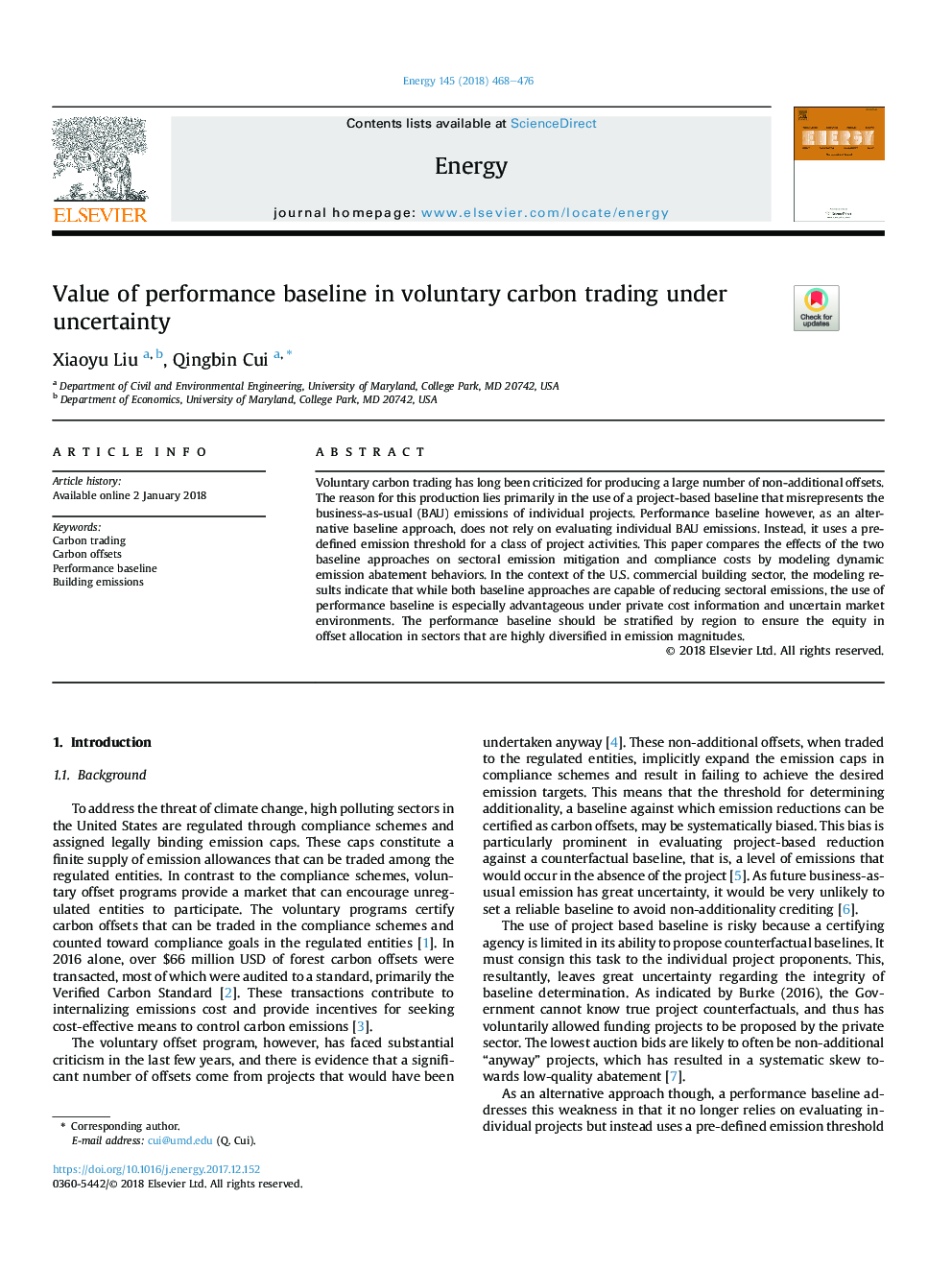| Article ID | Journal | Published Year | Pages | File Type |
|---|---|---|---|---|
| 8072222 | Energy | 2018 | 9 Pages |
Abstract
Voluntary carbon trading has long been criticized for producing a large number of non-additional offsets. The reason for this production lies primarily in the use of a project-based baseline that misrepresents the business-as-usual (BAU) emissions of individual projects. Performance baseline however, as an alternative baseline approach, does not rely on evaluating individual BAU emissions. Instead, it uses a pre-defined emission threshold for a class of project activities. This paper compares the effects of the two baseline approaches on sectoral emission mitigation and compliance costs by modeling dynamic emission abatement behaviors. In the context of the U.S. commercial building sector, the modeling results indicate that while both baseline approaches are capable of reducing sectoral emissions, the use of performance baseline is especially advantageous under private cost information and uncertain market environments. The performance baseline should be stratified by region to ensure the equity in offset allocation in sectors that are highly diversified in emission magnitudes.
Keywords
Related Topics
Physical Sciences and Engineering
Energy
Energy (General)
Authors
Xiaoyu Liu, Qingbin Cui,
